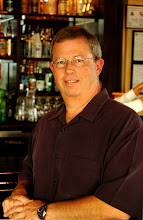In the near future, I will begin posting on situations in
the economy and government that affect my industry, subcontracting. To be taken
as a serious source, I need to establish my bona fides. I graduated from
Campbell University (then Campbell College) in 1970. I have a Bachelor of
Science degree in Business Administration, but my true interest was in
economics and I took all the courses I could in the economics area.
For Money and Banking, I was privileged to study under Dr.
Charles E. Landon. “Dr. Charlie” was a man of small stature, but a man of large
influence. He was one of the 3 founding fathers of the economics department of
Duke University in 1926. He studied and taught through the “Roaring Twenties”
and the Great Depression. He had great stature in the money and banking area
and during his career, he was called on to counsel several presidents. He taught
from an old fashioned professor’s desk, a raised desk similar to a judge’s
bench in a courtroom. He was held in great respect by the students as he was
always willing to take time after class to answer questions and coach us through
the hard part. Dr. Charlie had retired from Duke University, but had come out
of retirement to teach the course he loved most, Money and Banking.
Unlike many current economics instructors, Dr. Charlie kept
to the facts. We covered all the different economic theories, including the
good points and bad points of each. Keynes vs. Friedman. The various theories
of money. Strong central bank vs. weak central bank. Equal emphasis was given to each one and we,
the students, were left to question the fine points and decide for ourselves.
Our current government follows the theories of John Maynard
Keynes. His belief was that with a strong central bank (The Federal Reserve)
the government could manage a consistent economy without the highs and lows of
a free market economy. The Fed controls the money supply by changing the
interest rates, issuing bonds and printing money. Keynesian theory holds that
an increase in the money supply will stimulate the economy. If the theory is
correct, then with the very low interest rates, all the government borrowing
and spending and the Fed’s quantitative easing (printing more money), then why
is our economy so stagnant.
One problem is that the Fed cannot control the Velocity of
money. Velocity is the number of times a dollar will be spent over a period of
time. For example, if I take $100 out of the bank and buy a painting from an
artist, he might then take that money and buy food from a farmer, who might
then take that money and buy a part for his tractor and so on. My $100 could
conceivably stimulate the economy by many hundreds of dollars. In a slow
economy, people tend to hold on to their money; save it or pay down their
debts. This produces zero velocity and has
an adverse effect on the economy.
So, in my opinion, the economy will come back when jobs and
confidence come back. People who are insecure in their jobs or don’t have jobs
do not spend any more than they must and this does not create the money
velocity to grow the economy. The fastest way to grow jobs is to stimulate
business development. Right now, business confidence is low. There is so much
insecurity about the future, including the unknown costs of Obamacare and
regulations coming from various government agencies, that businesses are
reluctant to expand and hire additional people. Until the government changes its attitude
toward business, this sluggish economy will continue.

